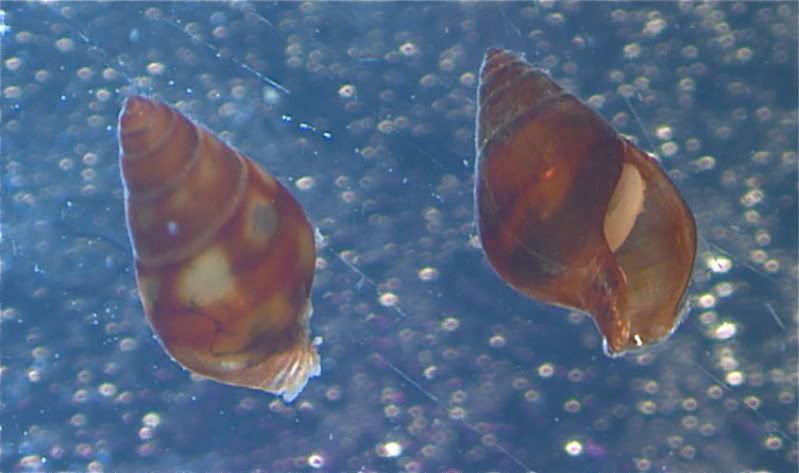
Other critters that we've found are a bit stranger. I immediately recognized this one as a male "caprellid" amphipod, also known as a skeleton shrimp. He looked a lot like a species we used to see in Virginia; Caprella equilibria. But his rounded head was strange, as was his red exoskeleton and the green fuzz on his neck and arms. I now think that he is an invasive species, Caprella mutica, from Japan. Because these plankton-feeding organisms like to cling to hard surfaces underwater, they're easily transported around the world on the hulls of ships or in bushels of oysters for aquaculture.
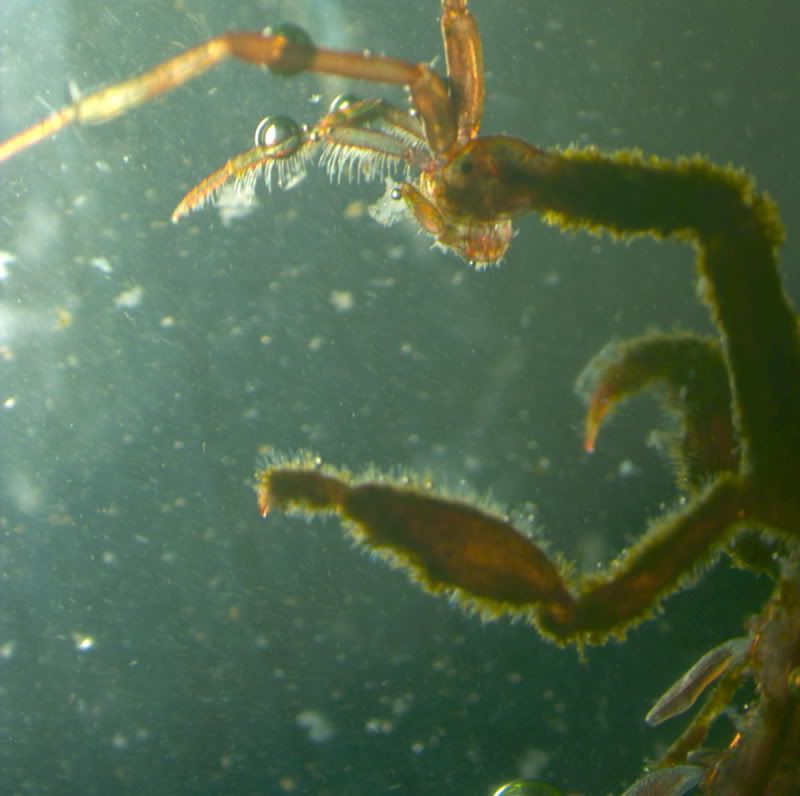
Two other species of amphipod that I found were also new to me. I think this first one is a Gammarellus, but I'm a bit tentative on that ID.
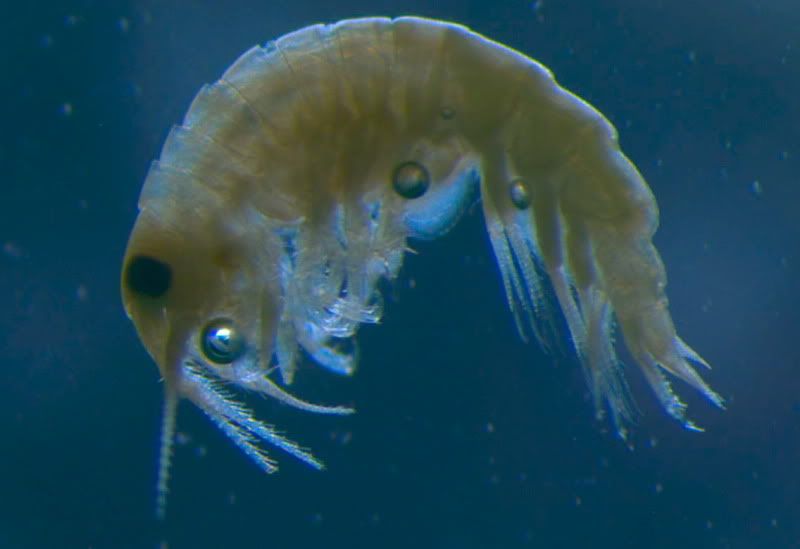
This one I'm pretty sure is a Dexamine thea, because the shape of the mucronations (spikes) on the back segments is distinctive. In life the Dexamine and Gammarellus are prettier colors, but here they're bleached white from being preserved in ethanol.
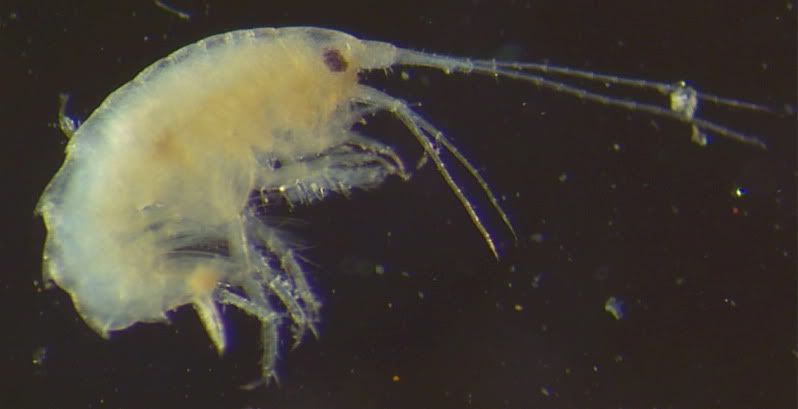
One of the weirdest creatures we encountered was very small- less than a millimeter long. With eight legs it looked just like a mite or a tick. It turns out that is IS a mite, from a mysterious group of marine arachnids called the halacarids. It has sucking mouthparts for draining the juice from cells of seaweed.

In this more detailed photo you can see the two claws on the end of each its legs. Cute!
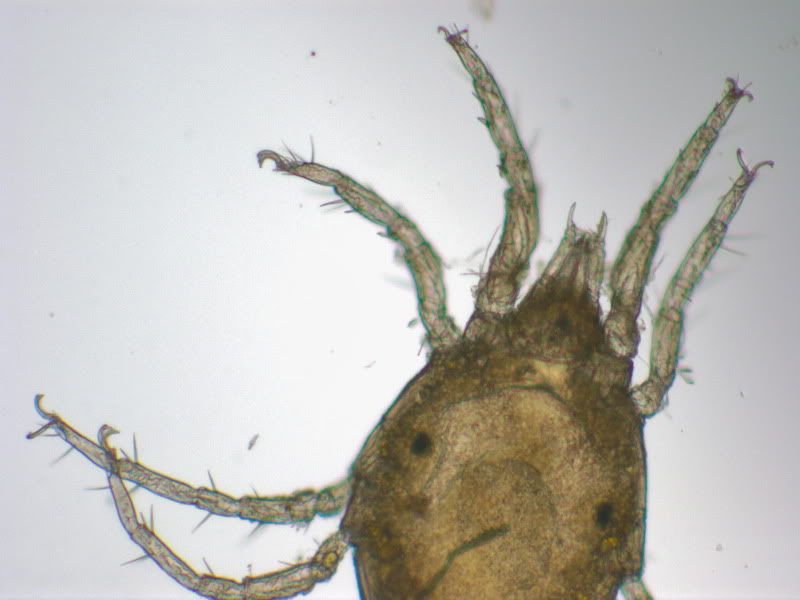
I started with snails and I'm going to finish with snails. These ones are Banded Chink Shells, or Lacuna vincta. I like their scientific name better. Though their coloration is a little like the Astyris lunata, their shape is rounder, and the opening of their shell lacks the siphonal canal typical of predatory whelks. That's because they are algae-eating herbivores. Lacuna are extremely abundant in the eelgrass beds of Nahant, and we hypothesize that they're important in keeping the eelgrass clean of algae, especially in the summertime when fish deplete the populations of other small grazers like amphipods.
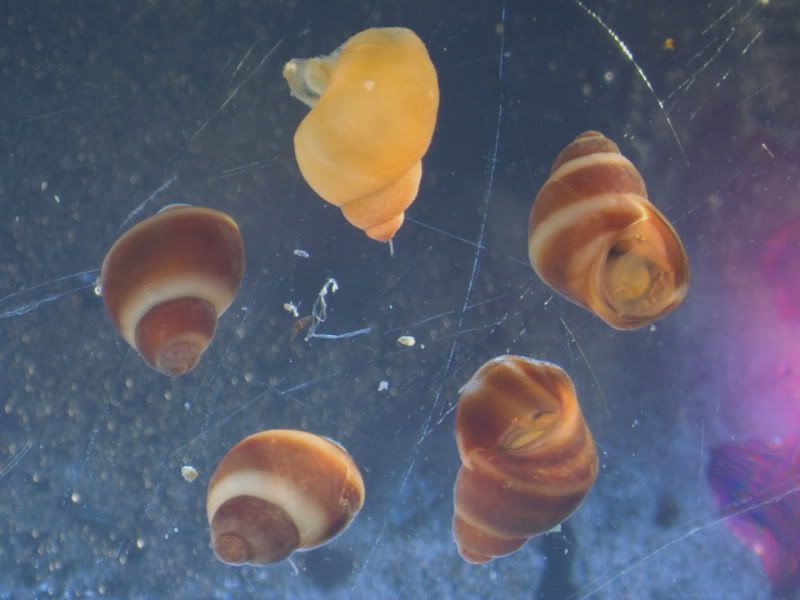
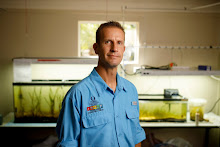
1 comment:
I love these photos!
Well, all but the mite. That one's going to give me nightmares for a week.
I think the cutest little critter by far is the caprella. You can tell he's got some attitude. I can imagine him saying "rawr!" while nomming some plankton, terrorizing the other amphipods in the eelgrass.
It took me a second look at both snail pictures to realize what you were talking about with the siphonal canal in the shell, but wow, yeah, that's pretty distinct.
Thanks for sharing! :)
Post a Comment